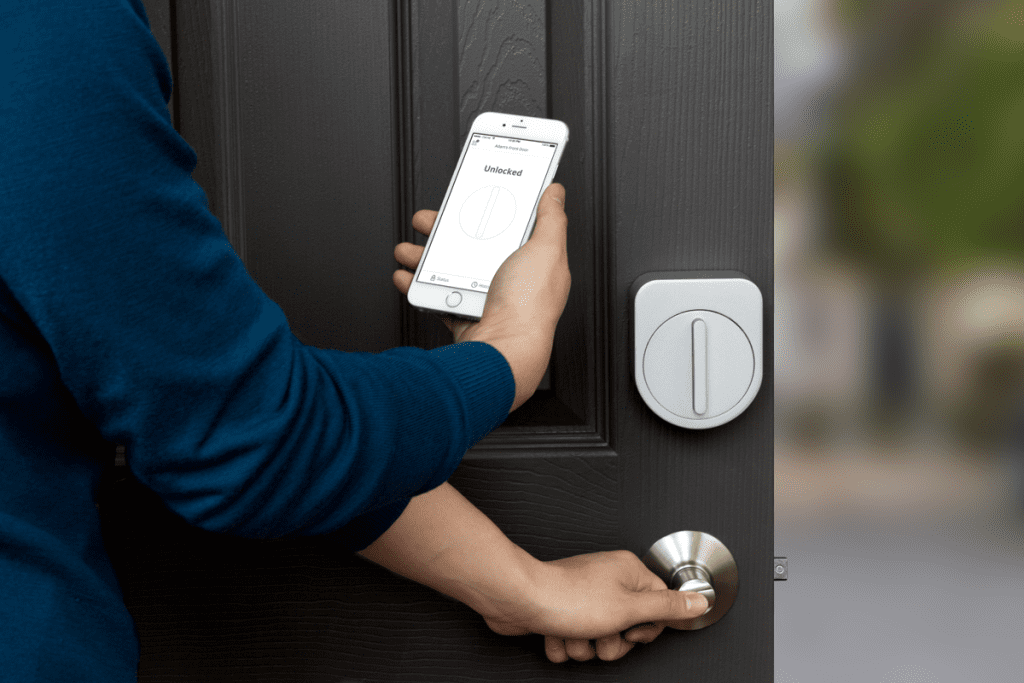As someone who has locked himself out of his apartment before, the idea of a lock that can be controlled with a smartphone is appealing. The recently announced Kickstarter project Sesame boasts a reasonable price tag and simple installation, but there are still a few obstacles.
Like other smart locks, such as August, Lockitron, and Kevo, Sesame lets you control your standard deadbolt via a smartphone using the Bluetooth Low Energy (LE) protocol. You approach your door, activate the app, and the door unlocks. Sesame also lets you speak a phrase, knock on your phone when you’re in close proximity to the door, or even use a special knock on the door itself.
What sets Sesame apart from its competition is the ease of its installation. Rather than requiring you to replace the internals of your deadbolt, as most other smart locks do, Sesame just sticks on your deadbolt’s thumb turn with an adhesive strip. That’s also attractive to renters, whose landlords may not take kindly to them changing the locks. At $99, it’s also one of the cheapest smart locks to hit the market so far.
However, though Sesame says that it works with “just about any deadbolt in the USA / Canada / Australia”, Sesame’s developers aren’t sure if it will work with double cylinder locks that require a key on the inside instead of a thumb turn. It could also encounter problems with doors that have misaligned bolts–my apartment is in an old house, and you have to push or pull the door slightly to throw the bolt. Sesame’s developers told me that in those cases, you might still need to push or pull the door while activating the smart lock, which makes it a little less convenient. The other alternative is to realign the locks yourself, though that complicates the installation process.
Sesame, like most other smart locks, relies on battery power, though it touts 500 days of life on the included batteries, and will warn you when the power level is getting low. The good news is that because Sesame doesn’t require you to change out your hardware, you can always still use your existing key to get in–though that definitely takes some of the “smart” out of the lock.









